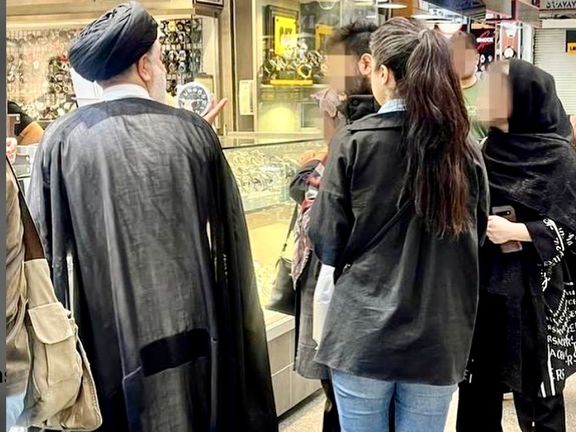Concessions or distractions? Iran's pop culture challenges theocratic rule

Pop concerts and late summer parties are spreading across Iran as music, as dance and fashion become battlegrounds testing the limits of state control.

Pop concerts and late summer parties are spreading across Iran as music, as dance and fashion become battlegrounds testing the limits of state control.
Videos on social media show unveiled women dancing and singing freely at these events, some of them open to the public. In Tehran’s Grand Bazaar, models recently walked a red-carpet fashion show with no hijab in sight.
Just a few years ago, such scenes brought swift arrests. Most seem to meet no retaliation, and the fashion show earned only a limp judicial summons.
Some view these as proof of state retreat under social pressure. Others say it’s not real change but fleeting gestures to distract from economic hardship and the anniversary of the 2022–23 Woman, Life, Freedom protests in which hundreds were killed.
Hardliners fight on
Hardliners denounce hijab-free events as a betrayal of revolutionary values, warning that such openings erode ideological control and deepen rifts inside the establishment.
“It’s as if all the cultural officials of the country have perished together,” one conservative commentator posted online.
“Why did we have a revolution, sacrifice our loved ones to the enemy’s blade, and create a cemetery of martyrs? Only to become so like Westerners and allow a civilization … detached from Sharia to dominate us?”
At the Shah’s palace
The clash was visible at a September concert by pop star Sirvan Khosravi on the grounds of the Shah’s former palace, now run by Tehran Municipality. Clips of unveiled women singing and dancing went viral.
Only a year earlier, women were detained at another Khosravi concert for Islamic dress code violations. This time, police stood back. Some described the atmosphere as euphoric.
“Sirvan Khosravi’s concert was more than just a performance; it was walls breaking down,” said Nazanin, a 21-year-old student. “The compulsory hijab has nearly collapsed, and women are reclaiming cultural freedoms one by one.”
On X, a user named Mostafa used the hashtag #retreat: “Did anyone notice? The attendees sang ‘I love my life’ with no interference from enforcers … or police? The Mayor and City Council paid the costs, and police chief (Ahmadreza) Radan was busy protecting the dancers!”
Both officials had long promoted and enforced Islamic dress codes.
Opening or survival instinct?
Some among Tehran’s opposition accuse both artists and fans of playing into the establishment’s hands, saying that such events coincide with families mourning the third anniversary of Mahsa Amini’s killing.
“When certain groups in the government stage free street concerts during the protests’ anniversary, a wise person shouldn’t play on its turf,” one user posted on X. “Whatever the mullahs say and do, the opposite is right.”
Some see this tolerance as a survival tactic rather than real liberalization. Others believe it signals cracks in the Islamic Republic’s cultural order.
Music journalist Bahman Babazadeh argued: “The system has learned its lesson. It has moved beyond the stupidity of canceling concerts. It’s no big deal if a few reactionary zealots get angry by these images. For survival, the system has adapted.”
Filmmaker and academic Ali Azhari suggested the state tolerates “safe” cultural expressions while clamping down on those with social impact.
“The regime has concluded, more or less, that cultural mediocrity is harmless,” he wrote.
“Pop beats, commercial comedies with a few sexual jokes … don’t really pose a threat to the system. But when culture drives real social mobilization, there is no compromise.”